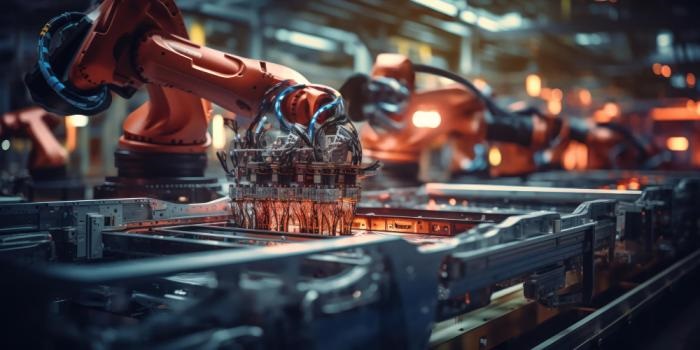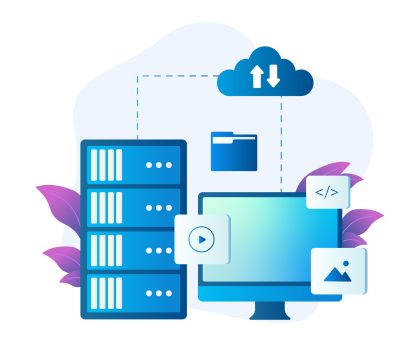Introduction
In the modern era, manufacturing industries are increasingly relying on software solutions to enhance productivity, ensure quality, and streamline operations. The process of developing such software solutions, known as the software development lifecycle (SDLC), is crucial for creating efficient, reliable, and scalable manufacturing systems. This article delves into the intricacies of the SDLC in the context of manufacturing, exploring each phase from concept to production and emphasizing the unique challenges and considerations inherent to manufacturing software development.
Understanding the Software Development Lifecycle (SDLC)
The SDLC is a systematic process used by software developers to design, develop, test, and deploy software applications. It typically consists of several distinct phases: requirements analysis, design, implementation, testing, deployment, and maintenance. Each phase is integral to the overall success of the project, ensuring that the final product meets user needs and operates effectively within its intended environment.
Phase 1: Concept and Requirements Analysis
Defining the Concept
The initial phase of the SDLC involves conceptualizing the software solution. In manufacturing, this step is often driven by a need to solve specific operational problems, improve efficiency, or comply with new regulatory requirements. Stakeholders, including management, engineers, and IT professionals, collaborate to define the scope and objectives of the project.
Gathering Requirements
Once the concept is defined, the next step is to gather detailed requirements. This involves extensive consultations with end-users, such as machine operators, maintenance personnel, and quality control managers, to understand their needs and expectations. The requirements should cover functional aspects (what the software should do) and non-functional aspects (performance, security, usability, etc.).
Creating a Requirements Specification Document
The gathered requirements are then documented in a Software Requirements Specification (SRS) document. This document serves as a blueprint for the entire development process, providing a clear and concise description of the software’s functionalities and constraints. It ensures that all stakeholders have a shared understanding of the project’s goals and helps prevent scope creep during development.
Phase 2: Design
High-Level Design
In the design phase, the abstract concepts and requirements outlined in the SRS are translated into a detailed plan for building the software. This phase starts with a high-level design, which outlines the overall architecture of the system. In manufacturing software development, this often involves defining how the software will integrate with existing hardware, such as PLCs (Programmable Logic Controllers), SCADA (Supervisory Control and Data Acquisition) systems, and IoT devices.
Detailed Design
Following the high-level design, a more detailed design is created. This includes the design of individual modules, user interfaces, databases, and communication protocols. Detailed design specifications ensure that developers have clear guidelines to follow during implementation. They also help identify potential issues early in the development process, reducing the risk of costly changes later on.
Phase 3: Implementation
Coding and Development
Implementation, or coding, is where the actual development of the software begins. Developers write code based on the detailed design specifications. In manufacturing software development, this often involves writing software that can interface with various industrial devices and systems, process real-time data, and provide user-friendly interfaces for monitoring and control.
Version Control and Collaboration
Effective version control and collaboration tools are essential during implementation. They help manage changes to the codebase, facilitate collaboration among team members, and ensure that the project stays on track. Popular tools like Git, Subversion, and Mercurial are commonly used in the industry.
Phase 4: Testing
Unit Testing
Once a module or component is developed, it undergoes unit testing. Unit tests are designed to verify that individual parts of the software function correctly. This is particularly important in manufacturing software development, where a single malfunction can disrupt production processes.
Integration Testing
After unit testing, integration testing is conducted to ensure that different components of the software work together seamlessly. This is crucial for manufacturing systems that rely on the interoperability of various modules and devices.
System Testing
System testing involves testing the complete integrated software to verify that it meets all specified requirements. In manufacturing, this often includes simulating real-world operating conditions to ensure the software can handle the demands of the production environment.
User Acceptance Testing (UAT)
The final stage of testing is user acceptance testing, where end-users test the software in a controlled environment to ensure it meets their needs and expectations. Feedback from this testing phase is invaluable for making final adjustments before deployment.
Phase 5: Deployment
Planning for Deployment
Deployment planning involves preparing the software for release into the production environment. This includes developing a deployment plan, creating user documentation, and training end-users. In manufacturing, it also involves coordinating with operations teams to minimize disruptions during the deployment process.
Deployment Execution
The actual deployment involves installing the software on the production systems, configuring it as needed, and conducting a final round of testing to ensure everything is working correctly. This phase requires close coordination with IT and operations teams to ensure a smooth transition.
Phase 6: Maintenance and Support
Monitoring and Maintenance
Once the software is deployed, ongoing maintenance is essential to ensure it continues to operate effectively. This includes monitoring the software for issues, applying patches and updates, and making necessary adjustments to optimize performance. In manufacturing, proactive maintenance is crucial to prevent downtime and maintain production efficiency.
Providing Support
User support is another critical aspect of the maintenance phase. This includes providing helpdesk services, resolving user issues, and offering training and documentation to help users get the most out of the software.
Unique Challenges in Manufacturing Software Development
Integration with Legacy Systems
One of the significant challenges in manufacturing software development is integrating new software with existing legacy systems. Manufacturing facilities often rely on a mix of old and new technologies, and ensuring seamless communication between these systems can be complex.
Real-Time Data Processing
Manufacturing environments require real-time data processing to monitor and control production processes. Developing software that can handle large volumes of real-time data efficiently and accurately is a significant challenge.
Ensuring Reliability and Safety
Manufacturing software must be highly reliable and safe, as failures can lead to costly downtime, equipment damage, or even safety hazards. Rigorous testing and validation are essential to ensure the software meets stringent reliability and safety standards.
Customization and Scalability
Manufacturing processes vary widely between industries and even individual facilities. Developing customizable and scalable software that can adapt to different requirements and grow with the business is a critical challenge.
Case Study: Implementing Manufacturing Execution System (MES) Software
To illustrate the SDLC in manufacturing software development, let’s consider the implementation of a Manufacturing Execution System (MES). An MES is a critical software application that monitors and controls manufacturing operations in real-time.
Concept and Requirements Analysis
The concept phase begins with identifying the need for an MES to improve production efficiency and quality. Stakeholders gather requirements through workshops and interviews with production managers, operators, and IT staff. The requirements are documented in an SRS, specifying the need for real-time data collection, production scheduling, quality management, and integration with existing ERP (Enterprise Resource Planning) and SCADA systems.
Design
In the design phase, architects develop a high-level design outlining the system architecture, including how the MES will interface with existing systems. Detailed design specifications are created for each module, such as data collection, reporting, and user interfaces. Special attention is given to designing a scalable system that can handle increasing production volumes.
Implementation
During implementation, developers write code for the MES modules based on the detailed design specifications. They use version control systems to manage code changes and collaborate effectively. Integration with PLCs and SCADA systems is developed to ensure seamless data flow between the MES and production equipment.
Testing
The MES undergoes rigorous testing, starting with unit tests for individual modules, followed by integration tests to ensure all components work together. System testing simulates real-world production conditions to verify the software’s performance. Finally, UAT is conducted with end-users to ensure the MES meets their needs and expectations.
Deployment
Deployment planning involves coordinating with production teams to schedule the installation during a planned downtime to minimize disruptions. The MES is installed on production systems, configured, and tested. User training sessions are conducted, and comprehensive documentation is provided.
Maintenance and Support
Post-deployment, the MES is monitored to ensure it operates smoothly. Maintenance activities include applying updates and patches and optimizing performance. A support team is available to address user issues and provide ongoing training and documentation.
Future Trends in Manufacturing Software Development
Industrial Internet of Things (IIoT)
The IIoT is revolutionizing manufacturing by connecting machines, devices, and systems to collect and analyze data in real-time. Manufacturing software development is increasingly focused on leveraging IIoT technologies to improve efficiency, predictive maintenance, and data-driven decision-making.
Artificial Intelligence and Machine Learning
AI and machine learning are being integrated into manufacturing software to enhance predictive analytics, automate quality control, and optimize production processes. These technologies enable manufacturers to identify patterns and anomalies, leading to improved operational efficiency and reduced downtime.
Cloud Computing
Cloud computing is transforming manufacturing software development by providing scalable, flexible, and cost-effective solutions. Cloud-based manufacturing software allows for easier collaboration, remote monitoring, and data accessibility, driving innovation and efficiency.
Cybersecurity
As manufacturing systems become more interconnected, cybersecurity is a growing concern. Manufacturing software development must prioritize security measures to protect sensitive data and prevent cyberattacks that could disrupt production.
Conclusion
The software development lifecycle in manufacturing is a complex and multifaceted process that requires careful planning, execution, and maintenance. From concept to production, each phase plays a critical role in ensuring the final software solution meets the needs of the manufacturing environment. By understanding the unique challenges and leveraging emerging technologies, manufacturers can develop robust software solutions that enhance productivity, improve quality, and drive innovation. Manufacturing software development is not just about creating software; it’s about transforming manufacturing operations to meet the demands of the modern industrial landscape.





